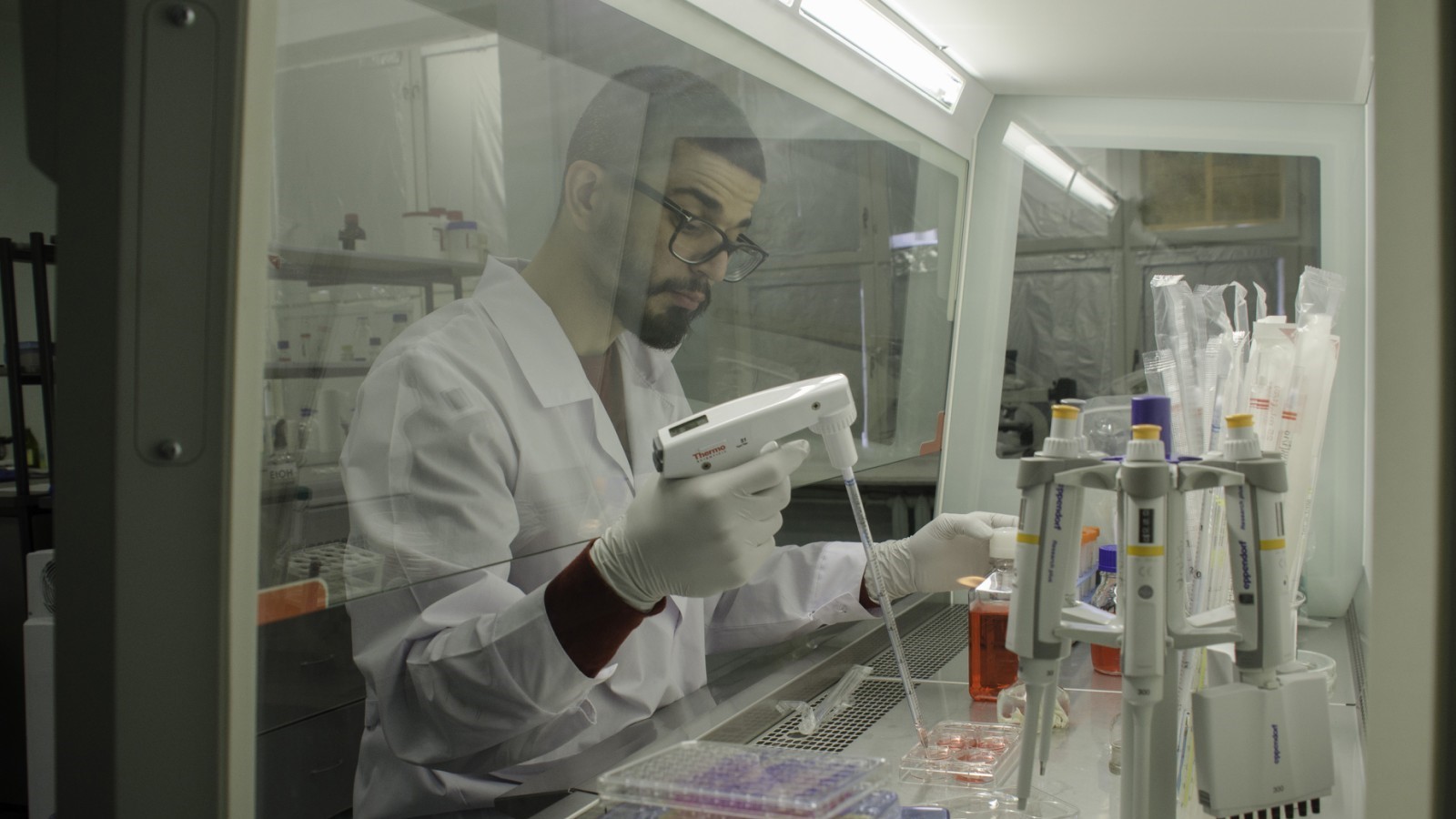New Anticancer Compounds are Derived

Triple-negative breast cancer (TNBC) is an aggressive breast cancer characterized by high rates of morbidity and mortality.
The main features of this type of tumor are the lack of expression of specific receptors on the surface of cancer cells: progesterone and estrogen receptors, as well as the absence of human epidermal growth factor receptor-2 overexpression (it is present in tissues and plays an important role in the regulation of cell growth and differentiation). Receptors are responsible for the development and functioning of cancer cells. Various anticancer drugs affect these receptors and can suppress cell activity and thereby stop tumor growth.
“As a rule, the prognosis for such tumors is poor. Targeted therapy is almost impossible because important receptors are missing,” explains Alexander Bunev, Director of the Center for Medical Chemistry at Togliatti State University (TSU). “Conventional chemotherapy is supposed to work here, but it affects cancer cells along with hematopoiesis cells, which means that this treatment has a lot of side effects. In addition, after a certain number of courses of conventional chemotherapy, the tumor develops treatment resistance. Thus, the treatment becomes ineffective, and further tumor growth becomes more aggressive.”
Approximately 15-20% of cases of detected breast cancer are triple-negative breast cancer. Most often, women under 40 years of age are diagnosed with it. Therefore, the efforts of specialists in science and medicine are focused on identifying new treatment methods.
The participants of the consortium “Medical Chemistry,” initiated by Togliatti State University in 2021 as a part of the federal program Priority 2030, are also working on the problem. The search for new compounds that are able to kill tumor cells is being conducted within the OpenHTS project (Open High-Throughput Screening). For this purpose, TSU has created one of the largest tumor cell banks in Russia.
Recently, a group of new substances was synthesized by researchers from the Saint Petersburg State University (SPBU) in collaboration with specialists from the Belarusian State University (BSU). The group of an associate professor and a Doctor of Chemical Sciences, Mikhail Kinzhalov, from the Institute of Chemistry at SPBU, has been developing complex compounds based on platinum and palladium with potential antitumor properties for several years.
“Based on these compounds, we can create structures of unique spatial complexity that enable us to interact with biological targets more precisely. However, metal-ligand chemical bonds tend to have low energy, which makes organic derivatives of transition metals prone to rapid destruction in the body. Our work focuses on overcoming this limitation through thoughtful molecule design. As a result, the synthesized compounds have high stability and can keep their properties unchanged for a long time,” says Mikhail Kinzhalov.
The scientists of St. Petersburg State University have sent a series of recently produced substances to the Center for Medical Chemistry at Togliatti State University for testing. For screening, TSU’s researchers used a panel of cell lines, which, among others, contained two types of breast cancer cells: classic cancer, which is hormone-sensitive, and a laboratory model of triple-negative breast cancer. Studies were also conducted on healthy cells: primary fibroblasts (primary cells within the dermis) and embryonic cells of the human kidney.
“When we received and tested these substances, we discovered a compound (hit), which, firstly, ‘works’ on a model of one of the most difficult clinical cases of breast cancer, TNBC. Secondly, it turned out that it is 3 times less toxic to human embryonic kidney cells and about 350 times less toxic to fibroblasts,” says Alexander Bunev. “That is, our hit is not just an agent who kills everything in its path. It has selectivity.”
Another significant advantage was the activity of the compound in the nanomolar range, that is, in very low concentrations.
“If in cell tests it is possible to achieve activity of the compound at such a concentration, then this substance can be "shoved" into a tablet. And therefore, it makes sense to supplement the research with preclinical trials in order to try to achieve therapeutic concentrations, that is, concentrations leading to a full antitumor effect,” says Alexander Bunev. “But at early stages, it is unacceptable to conduct such tests on humans, so an in vivo xenograft model is used.”
Xenograft is an experimental tumor model in which human tumor fragments are directly transplanted into mice. Such an experiment was carried out in the Laboratory of Biomarkers and Mechanisms of Tumor Angiogenesis at the N.N. Blokhin National Medical Research Center of Oncology (N.N. Blokhin NMRCO). The tumor transplanted into mice was treated with a new compound, also, for comparison, with the platinum-based drug cisplatin used in cancer chemotherapy.
“The experiment with the growth of samples of triple-negative breast cancer in mice lasted for 45 days,” said Dmitry Khochenkov, head of the laboratory. “With prolonged treatment with cisplatin, the tumor got used to chemotherapy and, after a while, began to grow again. At the same time, the new compound demonstrated statistically significant growth inhibition (suppression) in a TNBC xenotransplant in mice compared with the comparator drug. This confirms the effectiveness of the substance on living organisms and is relevant for its further development as an antitumor drug.”
The results of this large-scale research work were described by specialists from SPBU, BSU, TSU, and N.N. Blokhin NMRCO in the article published by Chemistry—A European Journal (Q2, IF 5.020). The weekly international peer-reviewed scientific journal publishes on its pages a wide range of research materials by authors from all over the world from various fields of chemistry and related fields.
1767
views